Vehicle battery charging voltage
A car battery consists of 6 cells connected in series. Each bank has a full charge of 2.10-2.15 V, so the total voltage is summed up, is 12.6 - 12.8 V. What is the voltage of the battery after disconnecting the charger? When installing a battery in a car, the voltage after charging should be 12.4 V. This is normal. The battery of the car is starting, it is discharged during the period of starting the engine, and during the movement it restores energy from the generator of the car. If the voltage in the battery drops to 12 V, the device requires charging from the mains. A large loss of charge in banks is characterized as a deep discharge that destroys the battery.
A car operated with the advantage of long mileage has time to be fully charged from the generator for the next start. But its charge will not be full. The state of charge of the battery can be determined by the voltage at the terminals. The smaller the value, the weaker the electrolyte concentration in the cans.
You can check the battery charge using a multimeter. Set the "alternating current" calibration and measure the indicator at the terminals. The charge level can be determined by the density of the electrolyte.
The state of charge of a car battery is determined by the voltage as in the table.
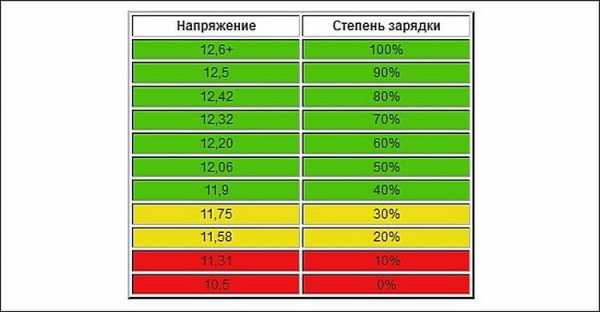
To increase the battery capacity, you need to charge it with a special charger. This is a voltage converter, rectifier. Batteries are serviceable, maintenance-free, gel, AGM, lithium. Their charging voltage and current differ in voltage, time, cycle duration. There are universal chargers designed for switching modes for different models of batteries, adjusting parameters.
Battery terminal voltage when charging
To charge the battery from the charger, select the constant current or voltage mode. Both are equally effective, but apply to different batteries. In the process of charging and operating the battery, it is necessary to measure the voltage at the terminals of the acid battery.
To charge a 12 V battery, you need to set the constant voltage mode to 16-16.5 V. Using a current of 14.4 V, you can charge the battery to 75-85%. With a constant voltage, the strength of the charging current is variable, it is limited only by the charger.
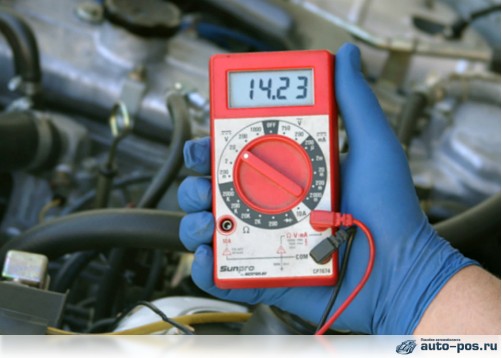
What charging voltage do I need to set? They proceed from the achievement of a critical voltage, accompanied by "boiling" - the release of gas from the cans of a car battery. The battery is considered to be normally charged, with a voltage at the terminals from 12.6 to 14.5 V. The readings should be taken with the device, without relying on the on-board computer. Measurements with the engine running and with the battery disconnected are different.
The permissible charging voltage at the battery terminals when the engine is running varies 13.5 -14 V. The indicator shows the undercharge of the battery if the voltage is higher. It is necessary to repeat the measurement after 2 minutes, the battery may have been discharged at startup. If the charging voltage is low, the battery is losing its resource or problems come from the car generator. You need to take measurements by turning off the on-board systems.
By measuring the charging voltage of the battery on an idle car, it is impossible to identify problems with the generator, however, the state of charge of the battery is well determined. A voltage of 12.5 - 14 V indicates no problems. If the indicator is low, you need to check:
- electrolyte state - the substance must be transparent, the level is normal;
- much depends on the battery charge level;
- determination of the possibility of recharging to the optimum voltage.
Testing will reveal problems with the battery, its performance.

Battery charging with constant resistance
Is it possible to charge a battery with a constant resistance? From the formula I = U * R, it is clear that if you set the resistance to a constant value, then the current or voltage will become variables. But inside the battery, resistance is a variable quantity that affects the absorption of energy. The impedance is the sum of the polarization resistance, which changes and ohmic, which remains stable under the same conditions and for a particular battery.
The resistance is influenced by temperature, degree of discharge, electrolyte concentration, taken into account in the characteristics of the battery discharge curves. But if in the formula the resistance is a variable in time and in the state of the car battery, then current, voltage, or a combination of current and voltage can be constant during charging. To smooth out the magnitude of the charging current, a resistor is used - a ballast resistance.
What voltage to set when charging the battery
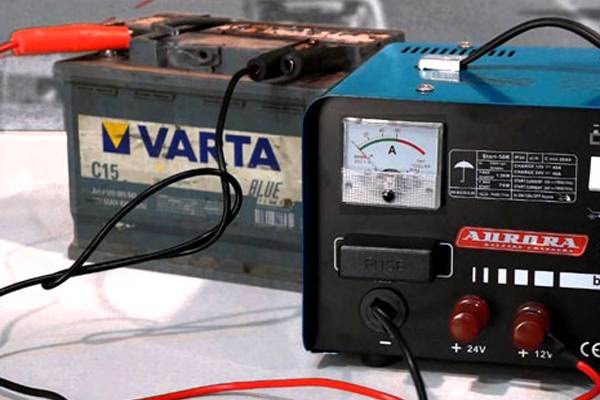
Voltage is a potential difference, and the current will flow in the direction where this value will be smaller. Therefore, the voltage of the charger is always selected to be higher than the charge level of the car battery. The greater the voltage difference, the faster and more fully the vehicle battery will gain capacity after charging.
During charging at constant voltage, the limit of the parameter set on the charger is lower than the characteristic at which gas evolution begins from the battery being serviced. What is the potential difference needed to charge a car battery? The maximum voltage used when charging the battery is 16.5 V. What parameter should be, depends on the type of battery. The time and completeness of charging the battery depends on the voltage. The ratio of charging voltage, capacity recovery for a 12 V battery in 24 hours is as follows:
- The 14.4 V voltage can charge the battery up to 75-80%;
- Using a voltage of 15 V, the state of charge is 85 - 90%;
- At 16 V, the battery is charged at 95 - 97%;
- The batteries are fully charged with a maximum voltage of 16.3 -16.5 V.
When the battery voltage reaches 14.4 - 14.5, the charging end signal lights up on the charger.
It has been established that it is precisely this voltage of the car battery that does not generate gassing after and during charging. Therefore, in the real operation of cars, the generator through the voltage regulator limits the maximum voltage level to this value. In summer, this indicator is close to 100% capacity, in winter it corresponds to 13.9-14.3 V, with the motor running, which corresponds to 70-75% of the capacity.
Maximum battery charging voltage
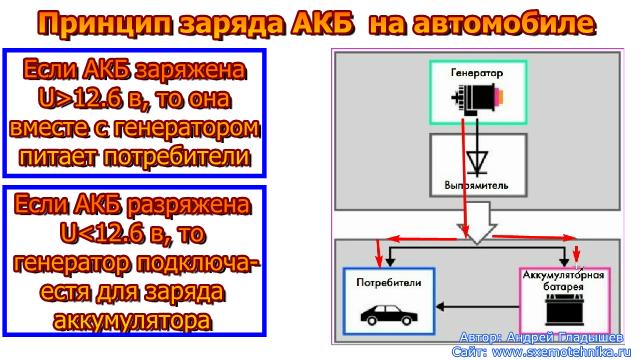
We know that modern high-end cars have an on-board system operating at 16 V. What batteries are used in these batteries? In order to avoid gas evolution, the system must be closed.
This means that maintenance-free Ca / Ca batteries can withstand harsh environments. A special charging mode is used for them. The use of calcium instead of antimony allows the battery to be charged with increased voltage, while the electrolyte boils. The maintenance-free battery does not tolerate sudden voltage fluctuations in the on-board network. It is designed for vehicles with a good electronic voltage control system. Hybrid batteries made of low antimony and calcium plates are more tolerant to operating conditions.
Battery voltage at the end of charging
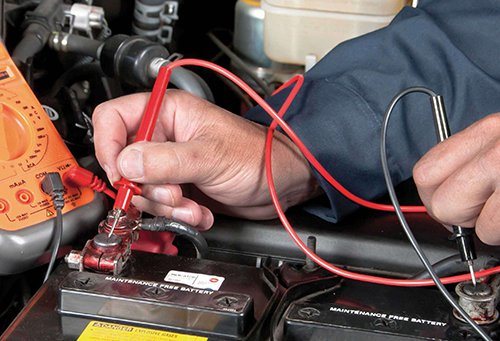
After fully charging the battery, the charge will change slightly. Dissociation of the electrolyte occurs with filling of the pores of the current-carrying plates. A car battery installed in the engine compartment assumes the ambient temperature, and the capacity changes upward in heat or drops in sub-zero temperatures. Therefore, after charging, you can find out exactly what the voltage of the car battery is by installing it in place. Even while in the workshop, the voltage at the terminals changes. This is especially noticeable if the cycle has not been completely completed and the charging current has not dropped to 200 mA. In this case, a redistribution of the charge occurs, and additional feeding of the device with energy is possible.
But if, after charging the battery, the voltage drops on a running machine, this is a reason for revising the generator or replacing the battery.
Dependence of battery charging on voltage
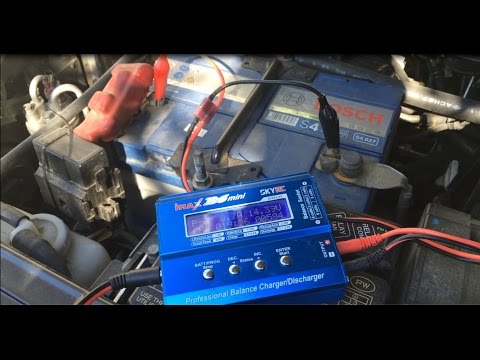
Each type of battery is charged based on the characteristics of the type of construction used. Serviced, gel and lithium batteries have the lowest charging voltage. Reasons for boiling, destruction of the composition, fire hazard. If the serviced battery can be charged with the simplest charger, lithium and gel systems require compliance with a 2-stage combined mode of energy storage.
All systems are designed to prevent overcharging, equipped with automatic power off when the voltage is reached, which is required for the car battery. When charging, a gradual decrease in current strength occurs due to an increase in resistance, the voltage remains stable. After charging, the electrochemical reaction process continues, in the form of a slight self-discharge.
It is important that the charging voltage always exceeds the parameters required for operating the device. In order for the current to flow, a slope is needed, which is the voltage difference between the charger and the battery.
Video
We suggest looking at the advice of a specialist on how to properly charge and maintain a car battery, what voltage should be on the battery after charging.














